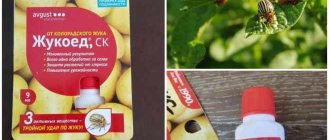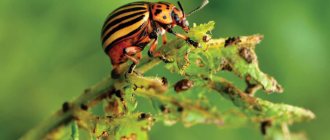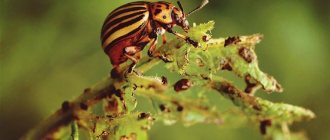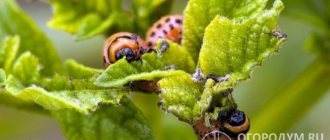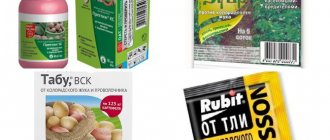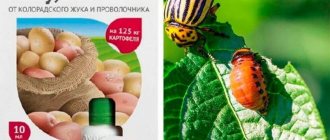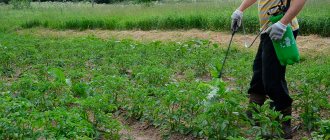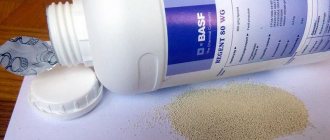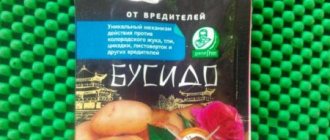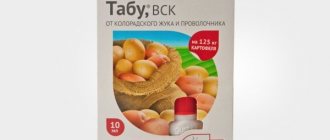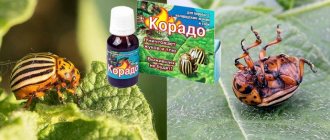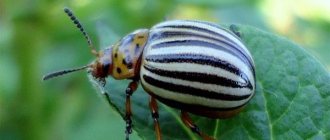712
The beloved potato has become the main food product for many millions of people in our country. The bulk of the harvest is harvested not on industrial plantations, but on personal plots of land. The agricultural technology of the vegetable is not simple, cultivation is labor-intensive. In addition, potatoes have their worst enemy - the Colorado potato beetle.
Its mass distribution occurred in the middle of the 20th century. At that time, people relied on the development of chemical science. Therefore, hopes for its extermination were associated with toxic chemicals. Nowadays, the question is different - who eats the Colorado potato beetle and what are its natural enemies?
Who can eat the Colorado potato beetle, insects and birds, how to train chickens to peck the pest
It is very important for gardeners to know who eats and thereby destroys Colorado potato beetles, because they are capable of destroying entire plantations of potatoes and other vegetables by actively eating their foliage. At the same time, potato leaf beetles reproduce at an incredible speed, and their ability to survive in unfavorable conditions is quite high
Who eats the Colorado potato beetle?
There are not many people in Russia who could eat beetles or larvae of the Colorado potato beetle. But still, nature has provided some birds and insects that can help humans in the fight against this pest.
Birds
Some poultry eat Colorado potato beetles and their larvae, and this can help eradicate them. For this method of control, you do not have to use chemicals, but simply release the birds into the garden beds.
Guinea fowl
The main diet of guinea fowls is, of course, grain crops, but these birds also love to eat various insects, with Colorado potato beetles being their particular predilection. Guinea fowl are attracted to their bright appearance. When they gather in groups, they enthusiastically hunt pests. This is why farmers love them very much.
Pheasants and partridges
Pheasants and gray partridges are considered natural destroyers of not only Colorado potatoes and their larvae, but also other garden pests. Gardeners often use these birds to kill insects, but it is better not to leave them in the beds unattended, otherwise they may trample the beds with other plantings.
Turkeys
Turkeys are one of those birds that do not rake the soil when looking for food. They simply collect prey from the surface of the earth or plants. Therefore, they are also allowed into areas with potatoes and other plants on which this insect parasitizes.
Important! When releasing poultry onto your garden beds, it is important to remember that they should not be treated with chemicals. This can cause great harm to birds
Insects
Not only birds can destroy pests in gardens. This mission is also successfully carried out by some types of insects. They feed on eggs, larvae, and sometimes adult beetles.
ladybugs
These attractive bugs are quite useful for gardeners. They eat the eggs of garden pests, preventing them from reaching the most harmful stage of development - the larval phase.
Most often, colorados are eaten by ladybugs that are variable, seven-spotted, thirteen-spotted, and fourteen-spotted. On average, one ladybug is able to eat up to 15 eggs of striped pests.
Lacewings
This insect resembles a midge in appearance, but they lead a predatory lifestyle. Like ladybugs, lacewings eat the eggs of Colorado potato beetles, and they can also handle small larvae. One individual lacewing is capable of destroying 200-300 Colorado potato beetle eggs in its lifetime. The lacewing is powerless against adult pests.
Syrphid or hoverfly
These insects look like hornets; in summer they can be seen over beds of dill or carrots. Adults feed on the nectar of small-flowered plants, but their larvae eat small insects - aphids, spider mites and Colorado potato beetle larvae. The development of syrphids lasts 2-3 weeks, the older the individual becomes, the greater its appetite. She can eat up to 200 insects per day.
Who else eats the Colorado potato beetle?
The potato leaf beetle also has natural enemies. For example, the American perillus bug. Both adults and their larvae feed on eggs and, in rare cases, larvae of this pest. The larva of this bug during its development is capable of destroying up to 250 eggs. An adult bedbug consumes 3000-3500 eggs over its entire life.
The grasshopper can also become an enemy of the Colorado potato. They are omnivores, eating various insects, including potato leaf beetles. Grasshoppers are a fairly common insect, so they are a real threat to pests. The ground toad also became a threat to the potato leaf beetle. She eats pests that are underground. Toads also prey on mole crickets, which damage the garden just as much as colorados.
Ladybug
Adult ladybugs and their larvae perfectly destroy aphids, spider mites and other insects. True, they eat Colorado potato beetles only at the egg and larval stages, and do not touch adult individuals.
In general, the ladybug itself actively visits summer cottages, but some large farms purchase ladybugs specifically so that their number in plantings of cultivated plants is maximized.
To attract a ladybug to potato beds, you can:
1. Plant between rows or along the perimeter:
- Umbrella plants, such as dill, coriander, fennel. We need to let these plants bloom.
- Elderberry.
- Cows' favorite flowers: cornflowers, calendula, yarrow, cosmos, mint, tansy, geranium.
2. Spray the tops with an attractive mixture:
- Water with sugar (about 150 grams per 1 liter of water);
- Or water with sugar and yeast: yeast and sugar 1:1, that is, do as in the first option, but add the same amount of yeast.
It is not necessary to dilute the bait with sugar and yeast much with water: you can bring it to a paste, spread it on the pegs and stick these pegs between the rows of potatoes.
Some gardeners also make special houses for ladybugs so that they remain on the site over the winter.
Free range birds
If a summer resident raises guinea fowl or turkey poults on his property, then he can let them out to graze freely from the age of 3 months. There is no need to be afraid that they will harm the area; they peck insects and do not tear up the ground.
It is necessary to trim the wings, because these birds are capable of flying.
An important condition why these birds are kept everywhere in Russia on farm plots and personal lands is their adaptability to harsh weather conditions. Growing potatoes involves constant pest control
Every gardener wants to add as few chemicals as possible. Many, worried about their own health, are looking for ways to solve this problem. Raising birds at home that feed on insects is an excellent way out of the situation.
Growing potatoes involves constant pest control. Every gardener wants to add as few chemicals as possible. Many, worried about their own health, are looking for ways to solve this problem. Raising birds at home that feed on insects is an excellent way out of the situation.
The beloved potato has become the main food product for many millions of people in our country. The bulk of the harvest is harvested not on industrial plantations, but on personal plots of land. The agricultural technology of the vegetable is not simple, cultivation is labor-intensive. In addition, potatoes have their worst enemy - the Colorado potato beetle.
Its mass distribution occurred in the middle of the 20th century. At that time, people relied on the development of chemical science. Therefore, hopes for its extermination were associated with toxic chemicals. Nowadays, the question is different - who eats the Colorado potato beetle and what are its natural enemies?
Feathered helpers
So, let's figure out who eats the Colorado potato beetle? In addition to birds, this insect is destroyed by lacewings. But it is not recommended to use them in the fight against Colorado.
Starlings
These insects cause more harm to the crop than benefit. In our country there are several species of domestic and wild birds that can be used as a tool to combat insect pests.
Read on the topic: How to get rid of the Colorado potato beetle using mustard and vinegar
Help from wild birds
Cuckoo
What birds eat Colorado potato beetles?
This insect is part of the menu:
- Cuckoos;
- Ryabchikov;
- Vorobiev;
- Crow;
- Skvortsov.
Help for domestic birds
Rooster
Read on the topic: Fragrant tobacco against the Colorado potato beetle
Colorado is included in the diet:
- Partridge.
- Chicken
- Turkeys.
- Pheasants.
- Guinea fowl.
Help Guinea chickens
Guinea fowl
The idea of using domestic birds in the fight against insect pests first came to the minds of South American farmers. To do this, they began to “set” a special breed of chickens on the beetle. Guinea chickens, also known as guinea fowl, are characterized by rapid acclimatization in a wide variety of conditions. These are hardy and unpretentious birds.
You may be interested in this product: Insecticide Executioner - poison for the Colorado potato beetle
In the domestic space, the following breeds of guinea fowl are most widespread:
- mottled gray;
- cream;
- Zagorsk white-breasted;
- Volga white.
Do guinea fowl eat Colorado potato beetles? According to gardeners, the benefits of this small bird with thick dark plumage are not exaggerated.
In order for the pest to stop reproducing, 2-3 “raids” of feathered special forces are enough. The bird does not eat the insects themselves, but the egg-laying eggs.
A total of 3-4 individuals is enough. They are able to rid the area of the pest in a few days.
Do guinea fowls eat insects?
Don't be skeptical about the fact that guinea fowl eat leaf beetles, it's true.
The feathered “special forces”, walking along the rows of potato plantings, will destroy not the adult striped pests themselves, but their larvae and egg laying.
It is enough to release feathered birds into the garden 3 times - and not a trace will remain of the garden pest.
There is, and the main disadvantage is that Guinea chickens are very shy birds. It is enough for someone to scare them, and they immediately begin to “bawl.” Frightened, they can fly to a safe place and return home only in the evening.
Read more: Sweet pepper pests and their control: what to do, how to treat them
Enemies of the Colorado potato beetle. Who eats the Colorado potato beetle? The main natural enemies of the pest
Who eats the Colorado potato beetle? In domestic latitudes there are birds and insects that act as natural enemies of this pest. For example, it is known for sure that guinea fowl eat Colorado potato beetles.
In the southern regions of the planet there are many more animals that can help in destroying the parasitic insect. However, we will not talk about this in this material, since their use in our conditions seems impossible. Let's look at who eats the Colorado potato beetle in the current climatic conditions.
Ladybug
One of the main natural enemies of the pest is the ladybug. The insect is effective only if it is necessary to exterminate the Colorado potato beetle in its early stages of development. In other words, the ladybug is capable of eating exclusively small larvae and eggs of the potato parasite.
Lacewing
If we talk about who eats the Colorado potato beetle among insect representatives, we cannot ignore the lacewing. In appearance, it resembles a small dragonfly of a light green color.
The lacewing is a predator. The insect is known for its gluttony and unpretentiousness in choosing food. The lacewing can help in destroying clutches of eggs and recently hatched larvae of the Colorado potato beetle. Due to its modest size, it is not able to influence adult, mature pests.
Syrphids
The insects known locally as hoverflies are predatory flies. Like ladybugs and lacewings, syrphids are one of the main natural enemies of this pest.
Hoverflies do not reach the size of an adult Colorado potato beetle. Therefore, they are absolutely useless in the fight against large individuals. However, their spread on a plot of land during the formation of pest larvae can significantly reduce its population.
Guinea fowl
What bird eats the Colorado potato beetle? They have proven themselves to be an effective exterminator of the guinea fowl parasite. These small birds eat insects well, which have a bright protective color. Guinea fowl not only peck larvae and clutches of eggs from potato shoots, but also pick up adult individuals from the ground and rake the soil with their paws in search of buried pests.
Pheasant
Who eats the Colorado potato beetle among other poultry? Pheasants cope well with this task. For these purposes, they are walked around the plot in the first half of summer. It was at this time that a massive increase in the parasite population was observed.
Breeding pheasants makes it possible to cope with the extermination of a number of other harmful insects, in particular, the larvae of the cockchafer and the mole cricket. At the same time, these birds are quite picky about their living conditions and do not always survive in harsh domestic winters.
What other birds eat the Colorado potato beetle?
In addition to the above-mentioned poultry, the following can influence the reduction of the pest population to a certain extent:
- crows;
- cuckoos;
- starlings;
- hazel grouse;
- sparrows
Is it possible to use domestic chickens to kill pests?
As practice shows, it is quite possible to train chickens to eat the Colorado potato beetle. Such poultry will peck larvae and adults from potato sheets only after preliminary “training”. It is necessary to accustom chickens to eat insects from an early age, when chickens reach 3-4 months. During this period, the bird’s favorite food should be mixed with Colorado potato beetle larvae. Thus, the chickens will have not only a visual, but also a taste association of the pest with the food. Subsequently, the prepared chickens will independently move around the beds, pecking parasites from the tops.
Finally
The advantages of exterminating the Colorado potato beetle without the use of chemicals are simply obvious. The gardener does not have to spend precious time, effort and money on cultivating the plot. In addition, such methods do not pose a risk to human health.
As for the disadvantages of the above methods, it is worth noting their rather low efficiency. Even a large number of birds will not be able to completely exterminate the pest population.
Lacewing, or rather its larvae
Adult lacewings eat mainly nectar, while the larvae subsist on predation. They actively catch aphids and Colorado potato beetle larvae. Adult beetles, alas, are not touched, but destroying the larvae will also save the potatoes.
It’s just important not to miss the moment: lacewings are attracted to plants that bloom early in the spring. After wintering, they urgently need to recuperate, and they willingly fly to those areas where flowers and shrubs bloom. Here, where they found food (nectar), they lay eggs.
You can also buy lacewing eggs, buy or build houses for wintering with your own hands (as well as for ladybugs), so that these beneficial insects live on the site permanently.
If summer is already in full swing, then, as in the case of ladybugs, you can attract them to the beds with the help of sweet water (sugar + water). They also love hedges (they rest there), hawthorn bushes, flowering beds with coreopsis, alyssum and other sweet-smelling flowers.
Who eats the pest
There is no need to rely on birds that live in the wild with a tropical climate. Therefore, scientists turned their attention to domestic animals.
The pest's enemies turned out to be domestic birds:
- chickens;
- partridges;
- guinea fowl;
- turkeys;
- pheasants.
Important! In order for the bird to get used to using the Colorado potato beetle as food, it is mixed in crushed form into the food of the chicks.
Chicken
It does not feed on adult pests or larvae on its own. This is due to the fact that the natural habitat of domestic hens is Asia, not America. This insect does not belong to the usual food. Therefore, chickens have to be trained.
Young birds at 3-4 months are taught to eat these insects by mixing larvae into the food. After some time, the birds get used to seeing the pest as food. Once trained chickens are released into the garden beds, they find food for themselves, clearing the plantings of pests and other insects along the way.
Partridges
Poultry lovers keep gray partridges on their farm. These unpretentious creatures thrive in cages on good food. They can also feast on pest larvae. But releasing wild birds into the garden to fight insects is hardly advisable. They will peck the Colorados, but it is unlikely that they will be able to drive them back into the enclosures.
Turkeys and guinea fowl
The Colorado potato beetle is afraid of poultry, which is found in peasant farmsteads in Mexico. Turkeys and guinea fowl are ardent opponents of the pest. Released into vegetable gardens that have not been treated with chemicals, the birds happily peck at the soft larvae. Adults are not abandoned either.
However, they also need to be “trained” to destroy the pest. From three weeks of age, chickens are given grated potatoes and green tops in their complementary food. They gradually become accustomed to the smell of the vegetable and develop the habit of looking for food with a similar aroma. After 2 weeks, crushed Colorado potato beetles are thrown into the mash. Three-month-old turkey chicks and guinea fowl are sent to free range in the garden. Before this, they are not fed for a day so that they eat pests more intensively.
Guinea fowl or Guinea chickens are rare guests in the poultry yard in Russia. Despite their unpretentiousness, tasty meat and eggs, they still remain exotic in private backyards. This bird itself pecks soft-bodied larvae and adults without raking the soil in potato plantings. The guinea fowl can even eat clutches of eggs from the tops without harming the green leaves.
Turkeys require more careful attention. The Indian rooster has a complex temperament, he needs a special approach and good food, he often gets sick and may refuse to feed. But the bird’s stomach is adapted to eating the Colorado potato beetle and larvae. Turkey poults are taught from childhood to collect them as food.
Pheasants
Recently, it has become fashionable to breed pheasants on private farms, which also easily feast on Colorado. But this bird is not completely domesticated, semi-wild. And also dear. Therefore, hardly anyone would want to release the pest from a closed enclosure into a potato field to destroy the pest.
Even if it copes perfectly with ground pests, with the larvae of the cockchafer and mole cricket. It is more prudent to use the collected beetle as complementary food for feeding adult birds.
If the potato field is fenced, and the pheasants are accustomed to returning to their enclosure as chicks, then you can try to get rid of the Colorado potato beetle in this exotic way.
Important! Pheasants, like chickens, love to dig in the ground and undermine beds in the most inappropriate places.
Of the birds found in the wild nature of Russia and capable of eating the Colorado potato beetle, the following representatives of birds are noted:
- cuckoos;
- hoopoes;
- crow;
- bluethroats;
- starlings.
Of these, only the latter can be attracted to the sites by hanging a birdhouse. But these birds settle in groups, so at least a dozen nesting sites are made for them at a time.
Professional agronomists are convinced that information about the consumption of the Colorado potato beetle by birds living in the middle zone has not been verified and is unlikely to be true. Birds are big fans of ripe berries and mistakenly confuse red larvae with them.
Important! While saving plantings from the Colorado potato beetle, you may miss the harvest of strawberries and cherries, which these birds are very fond of.
Is it possible to use chickens against the Colorado potato beetle?
In order to destroy the Colorado potato beetle, ordinary, well-known chickens began to destroy them, they must first be trained to do this. If this is not done, the larvae will remain on the potatoes.
In order for chickens to get used to fighting Colorado potato beetles, they need to start training them at 3-4 months of age.
The training is quite simple:
- First you need to crush the beetle larvae and add them to the chickens' feed.
- At the second stage. You need to add potato tubers or tops to the feed. This way, the chickens will get used to the potato smell.
- After a week, the amount of supplements can be increased.
- When the chickens get used to the potatoes and larvae, they can be safely released onto the site.
As you can see, chickens can not only be used against the Colorado potato beetle, but, most importantly, they must be accustomed to it.
“We have been fighting the Colorado potato beetle for a long time using various chemicals. All this helped with varying degrees of success. Then, we decided to get guinea fowls, at first we thought about turkeys, but abandoned this idea, because they need more and more frequent care. Guinea fowls are not whimsical; in addition, they cope well with the responsibility assigned to them. They just need to be accustomed to eating beetles, but this is not at all difficult to do. We really liked this option, because in addition to getting rid of beetles, we also purchase food. Eggs and meat are very tasty and healthy.”
“I, too, not so long ago decided to get this poultry, but no one told me that if you decide to get guinea fowl, you need to trim their flight wings, because they have not forgotten how to fly compared to chickens. Otherwise, everything is fine, these birds practically do not get sick and do not require special and constant care.”
https://youtube.com/watch?v=oyX2GCPtuC0
“Poultry, of course, helps in pest control, but I prefer other methods. When planting potatoes, I usually place 1 - 2 beans in a hole. This works well to repel the Colorado potato beetle. And I use domestic birds, whether guinea fowl or chickens, as an additional means.”
It's all about solanine
Solanine is a very successful evolutionary achievement of potatoes as a plant. Thanks to it, potatoes protect their above-ground parts from insects (solanine has insecticidal properties, that is, poisonous to most insects).
But in the process of its evolutionary development, the Colorado potato beetle managed to adapt to this poison. Of all above-ground potato pests, it is the main one.
Solanine is poisonous not only to insects, but also to all animals, including birds and hedgehogs. Colorado beetles, which actively eat potato tops, are literally saturated with this poison and have a terribly bitter taste. That's why almost no animals eat them. However, there are exceptions.
Recognition of the merits of the insidious.
Our people have neither humor nor generosity. For how else can one regard the summer residents immortalized in bronze, diligently picking out Colorado beetles and mole crickets from the ground... And the under-selected beetle itself brazenly crawls right towards the dacha worker, dragging behind it a bronze scroll with an ironic inscription: “Berdyanians! Let’s feed ourselves!”
Monument to summer residents in Berdyansk. Photo from the site kolyaseg.livejournal.com
Yes, yes, it’s in Berdyansk!
And in Dnepropetrovsk, by order of the Semena store, they made this positive sculpture - a monument to the Colorado potato beetle. The American leaf beetle rejoices that it has conquered all of Europe and half of Asia.
Monument to the Colorado potato beetle. Photo from greatest.su
It's a pity no one thought to slip a ticket to Colorado into his paws.
On such a joyful note, let’s move on to methods of combating this world-famous pest.
Feathered helpers
So, let's figure out who eats the Colorado potato beetle? In addition to birds, this insect is destroyed by lacewings. But it is not recommended to use them in the fight against Colorado.
Starlings
These insects cause more harm to the crop than benefit. In our country there are several species of domestic and wild birds that can be used as a tool to combat insect pests.
Read on the topic: How to get rid of the Colorado potato beetle using mustard and vinegar
Help from wild birds
Cuckoo
What birds eat Colorado potato beetles?
This insect is part of the menu:
- Cuckoos;
- Ryabchikov;
- Vorobiev;
- Crow;
- Skvortsov.
Help for domestic birds
Rooster
Read on the topic: Fragrant tobacco against the Colorado potato beetle
Colorado is included in the diet:
- Partridge.
- Chicken
- Turkeys.
- Pheasants.
- Guinea fowl.
Help Guinea chickens
Guinea fowl
The idea of using domestic birds in the fight against insect pests first came to the minds of South American farmers. To do this, they began to “set” a special breed of chickens on the beetle. Guinea chickens, also known as guinea fowl, are characterized by rapid acclimatization in a wide variety of conditions. These are hardy and unpretentious birds.
You may be interested in this product: Insecticide Executioner - poison for the Colorado potato beetle
In the domestic space, the following breeds of guinea fowl are most widespread:
- mottled gray;
- cream;
- Zagorsk white-breasted;
- Volga white.
Do guinea fowl eat Colorado potato beetles? According to gardeners, the benefits of this small bird with thick dark plumage are not exaggerated.
In order for the pest to stop reproducing, 2-3 “raids” of feathered special forces are enough. The bird does not eat the insects themselves, but the egg-laying eggs.
A total of 3-4 individuals is enough. They are able to rid the area of the pest in a few days.
Ground beetles
They actively destroy the larvae of the Colorado potato beetle. These predators prefer moisture and rotting organic matter, so they willingly settle in compost heaps and heavily mulched soil.
Thanks for the likes and good harvests to you!
Natural enemies of Colorado birds are domestic and wild birds. Many gardeners use their gastronomic preferences in the fight against the parasite. By finding out which bird eats the Colorado potato beetle, you can get rid of the pest quickly and without damaging the crop.
Causes of soil pests of potatoes
Preventing pests is much easier than fighting them. To do this, you need to know why they appear in the soil. Generally, there are three main reasons.
- Brought soil. Pests can enter the site with soil that was brought to the site.
- Compost. This fertilizer is very often used by gardeners and does not take into account that many pests overwinter in the compost site and lay eggs.
- Manure. The mole cricket and many other pests are very fond of such an environment and actively reproduce in it.
It is important to protect the crop from pests
It is equally important to follow the rules of crop rotation. You cannot plant potatoes in one area for several years.
This will lead to an increase in the number of pests. It is also necessary to destroy (burn) tops and other waste after harvesting.
General control and prevention measures
From the above reasons for the appearance of pests in the soil, several general recommendations follow that will help prevent the appearance of pests in the soil. To do this you need:
- shovel heaps of compost or manure in winter;
- bring only clean and uncontaminated soil to the site;
- Use rotted manure rather than fresh manure.
Following these simple rules will help prevent pests from appearing in the soil and eliminate the need to deal with them.
Medvedka
A large (up to 5 cm) omnivorous insect destroys all plants in its path. Potato tubers suffer more than tops, because the insect lives in the ground. Potatoes can be saved from mole crickets by deep digging the soil and removing adults and larvae from the soil.
Description:
- family - Orthoptera insects;
- the abdomen is huge (diameter up to 10 mm), 3 times larger than the size of the rest of the body;
- body color is brown, in places with black spots;
- the head has large eyes, 2 pairs of tentacles and huge powerful jaws;
- legs - 2 pairs of limbs in front and behind. The front legs are capable of digging up the ground;
- the wings are transparent, long and thin, 1.5 times longer than the abdomen.
Life cycle and reproduction of the Colorado potato beetle
The average lifespan of beetles is no more than a year, but some individuals that enter diapause due to unfavorable conditions can live up to three years.
In winter, adults hibernate deep into the ground. In the spring they crawl out and begin to attack young shoots. The first individuals to emerge from hibernation are weak, but if there is a food source nearby, they quickly regain their strength. A massive awakening of Colorado beetles is observed at a temperature of +14°C. The total time for insects to emerge from hibernation is about 1.5 months, depending on environmental conditions.
Beetles are capable of reproduction at an air temperature of about +11°C. It happens that the female managed to mate before leaving for the winter; in this case, after waking up, she will immediately begin to lay eggs.
One female lays an average of 30 eggs at a time, but their number can reach 70. During the summer period, she can lay about 700 eggs.
Colorado potato beetle eggs
At an air temperature of +21°C and a humidity of 70%, egg development takes 1-2.5 weeks, but if the temperature drops to +11°C, the process stops.
The eggs of Colorado potato beetles are oval in shape, have a smooth and shiny surface, their width is approximately 0.8 mm and their length is 1.7-1.8 mm. When the female lays eggs, they acquire a bright yellow color, then gradually darken and become almost orange.
Colorado potato beetle larvae
Colorado beetle larvae hatch from eggs in approximately 5-17 days; the exact number of days of maturation depends on weather conditions. The larvae have a small black head and a fleshy body, flat below and more convex above. On the front of the body there are three short pairs of black legs, on the sides there are black warts in two rows.
The Colorado potato beetle larva goes through 4 stages of development:
- First instar: the body is covered with hairs and has a length of 1.5-2.4 mm, it is colored dark gray. During this period, the larvae feed on the lower part of the leaf pulp.
- Second instar: the body changes color to bright red, its length increases to 2.5-4.5 mm, the number of hairs decreases. The larvae feed on the entire pulp of the leaf, leaving only the veins.
- Third instar: body length is 4.6-9 mm, color changes to brick, hairs disappear. Beetles move to neighboring plants and eat the pulp of leaves and young shoots.
- Fourth instar: the body reaches 9-15 mm in length, the color becomes from orange-yellow to red-yellow.
The orange color of the larvae is due to the fact that the main coloring substance in their body is carotene.
Each stage of development of the Colorado potato beetle larva ends with molting. During this period, insects actively feed and after 10-20 days they descend into the soil to a depth of approximately 10 cm and pupate.
Pupae and adults of the Colorado potato beetle
The pupa resembles an adult in appearance, its body length is about 9.2 mm, width - 6.4 mm. The pupa has a pink or orange-yellow body color.
If pupation occurs in the fall, then the beetle that emerges from the pupa remains in the soil throughout the winter and crawls out only in the spring.
After the beetle has passed from the pupa stage to the adult, within a few hours it darkens and becomes almost brown.
Over the course of 1-3 weeks, the pest accumulates fat reserves. In hot weather, thanks to its energy reserves, it is even capable of long-distance flights. By the way, beetles fly mainly in windy weather and can reach speeds of up to 7 km/h.
Origin
The main pest of nightshade crops: potatoes, tomatoes, eggplants, peppers is the Colorado potato beetle.
People first started talking about this insect outside of Mexico in the 19th century. In the US state of Colorado, this pest caused significant damage to potato plantations.
The wider the potato culture spread around the world, the greater the number of pests that appeared in the fields. This is due to the beetle’s extraordinary ability to adapt to changes in environmental conditions.
The length of the insect is 7-16 mm. The white wings are lined with longitudinal black stripes. The abdomen, legs and head are brown-orange in color.
Lays up to 160 eggs. They are bright orange, oblong, 0.8-1.5 mm long. The larvae are inactive, yellow or orange-red, with rows of black dots on the sides and a black head.
Why is the pest not afraid of winter cold, although it appeared in a tropical climate? The reason lies in the insect's lifestyle.
Nature has endowed the Colorado potato beetle with extraordinary immunity, which helps it adapt in one or two generations to get used to climate change and not react to toxic agents.
Adult insects overwinter in the soil in the fields where they fed in the summer. The depth of occurrence is 15-20 cm. They emerge from the ground when the soil around them warms up to +14-15°C. At this time, the crops on which the beetles fed are already covered with green leaves. Therefore, pests immediately lay eggs on the back of the leaf.
Damage to nightshade plantations is caused by adults and larvae, completely eating the greenery, leaving only veins on the plants.
After 3-17 days, depending on the temperature, larvae appear. They feed on potato leaves and grow rapidly. They feed for 15-22 days, then go into the soil and pupate.
After 7-8 days, adult insects emerge from the pupae. Depending on the climate, from 1 to 3 generations of offspring can develop.
It is difficult to destroy a pest in your own garden. Adult beetles travel tens of kilometers in search of food. And it’s not difficult for them to move from the neighboring garden to the vacated bed.
During the times of collective farms, potato fields and private gardens were treated jointly. Now it is impossible to organize such an event in one day. And the harm from pesticides is no less than from the Colorado potato beetle.
The massive distribution of insects and low susceptibility to chemical poisons prompted scientists to look for its enemies in nature.
